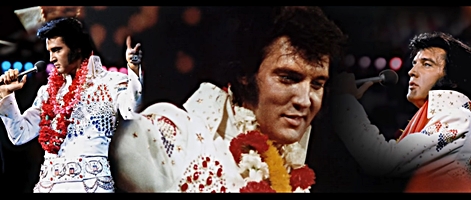 |
 |

Elvis Roots, Image, Comeback, Phenomenon - Mark Duffett: Equinox Publishing Ltd, 2020, Softcover, 260pp, Not illustrated, ISBN-13: 978-1845538309
Publisher’s pr for Elvis Roots, Image, Comeback, Phenomenon Elvis Presley remains the single most important figure in twentieth century popular music. To many commentators, however, he has simply embodied the benefits and problems of uncritically embracing capitalism. By 2005 the ‘Memphis Flash’ sold over a billion records worldwide, yet his cultural significance cannot be measured by these extraordinary sales figures alone. He cannot quite be reduced to a placeholder for the contradictions of commerce. As the most prominent performer of the rock’n’roll era, then as a charismatic global superstar, Elvis fundamentally challenged the established relationship between White and Black culture, drew attention to the social needs of women and young people, and promoted the value of Southern creativity. He functioned as a bridge figure between folk roots and high modernity, and in the process became a controversial symbol of American unity. THE REVIEW Mark Duffett is an academic, currently holding the position of Reader in Media and Cultural Studies at the University of Chester in England. He is also an Elvis fan. In 2018, Dr. Duffett released a fascinating look at Elvis’ best recordings, Counting Down Elvis His 100 Finest Songs. In 2020, his new book Elvis Roots, Image, Comeback, Phenomenon, offers a materially different, multi-disciplinary, and complementary examination of the Elvis phenomenon. And it is just as fascinating as his earlier work. In the case of Elvis Roots, Image, Comeback, Phenomenon, there is a robust mix of ideas and psychological and sociological theories. The author offers a lucid and intriguing expression around ideas such as Elvis as consumerism, traverses important sociological concepts, including race, social class, and gender, and explains how and why Sigmund Freud’s Oedipus Complex and Emile Durkheim’s work on totemic imagery (totemism*), are relevant to a full understanding of Elvis the phenomenon . Duffett addresses many intriguing questions, sometimes building on themes and questions he explored in greater detail in earlier works, including Understanding Fandom. For instance:
In answering these questions, he follows broad contours of Elvis’ rollercoaster career, using a range of analytical frames to challenge established perspectives about him, as icon. Duffett’s work shows that the controversy around Elvis, effectively tested how far a concern for social equality could be articulated through the marketplace, and ultimately challenged how popular music itself should be assessed.
Elvis and Billy Ward
On the seminal issue of the inter-relationship of Elvis, music and race, the author uses the backdrop of an America ‘predicated on racial trauma, the dispossession of both First Nations and Black slave labour – and its vast repercussions’. On this issue, the author’s narrative is a uniformly strong one, traversing seminal themes of appropriation, pantomime, reparation, and the confronting dichotomy between white and black sensuality. Heightening the drama and enforcing the point, Duffett invokes the position of Gael Sweeney who wrote in her paper, The King of White Trash Culture: Elvis Presley and the Aesthetics of Excess: The Black body in American culture is forever linked with labour and the savage discipline of slavery: power, fear, and sexuality are joined to make a combination that was, to middle-class White teenagers, as alluring as it was illicit. The author well prosecutes Sigmund Freud’s Oedipus Complex in the context of Elvis’ life and career. He cogently addresses misconceptions about the complex, and drafts a picture of the influence of both “good” and “bad” fathers throughout Elvis’ life – think Vernon, Sam Phillips, the Colonel. He interprets the impact that each had…….and why by 1973, and Elvis via Satellite Aloha From Hawaii, Elvis had evolved to a post-Oedipal stage, where neither a “good” or “bad” father was a factor. Duffett also uses Emile Durkheim’s work on totemic religions, to help explain the social phenomenon that supports Elvis. Durkheim argued (other researchers disagreed) that “totemism” was a form of religious practice based around a thing that a group had allegiance or belief in. One key element to Duffett’s consideration of Elvis as totem, is the Colonel’s machinations with both RCA and supporting artists on tour bills, and how these influenced public perception and energised Elvis’ fan base. The discussion is illuminating and adds greatly to our understanding of how Elvis’ career and impact was carefully crafted (at least, at that particular time).
As its title suggests, there are a number of structural pillars reflected in the book. They serve as windows through which the author views the phenomenon of his ‘four Elvises’. Methodologically, Duffett frames Elvis and the elements that integrate to reflect his perspectives, by examining the inconsistencies in how Elvis was perceived. On the issue of Elvis the rock and roll rebel he observes: A strong theme echoed by many social commentators is that Elvis personifies the commodification of a person in consumer society. Duffett does not disagree with this view, but sees it as too narrow a perspective in order to fully understand the phenomenon of Elvis Presley. As the pr for his book includes: He cannot quite be reduced to a placeholder for the contradictions of commerce. The strength of Duffett’s analysis is that he views such truths in a broader context, that of the multi-varied layers that together made Elvis who he was - Elvis the person, Elvis the phenomenon. And by so doing, Duffett reveals other perspectives in how we should consider his role and impact. For example, he contrasts Elvis’ well recorded patriotism for America as symbolised by his tour of duty from 1958 to 1960 and the concern expressed in his letter to President Nixon about unpatriotic, anti-establishment forces, and racially militant forces, with his image as a symbol of teen rebellion as a rock ‘n’ roll singer........incisively noting that Elvis’ “employee mentality” represented “…a stance that prized social deference above rebellion”. The author contends: Rather than a rebel who became a conservative, Elvis might be better interpreted as a progressive assimilationist: open to the potential of new influences, but also true to his roots, conservative (with a small “c”) and at odds with radicalism in either direction. He was primarily “apolitical”, compassionate and humanitarian: an individual whose private views melded conformity to social progressivism. Indeed, while Greil Marcus has suggested that Elvis was trapped in his own world, and made sense only within his own iconicism, it is also true to say that Elvis used his role as a singer to not speak at certain times and therefore refuse to take sides or draw lines. The result is that he could be catalyst to assimilation because he functioned as a universal inspiration. His image suggested good things remained possible in a fraught era of social change. For that reason he was able to take up a mantle of heroic subjectivity in his later career. Duffett further reinforces his theme:
Another recurring theme, and one which is quite nebulous (and will likely stimulate diverse debate), is the concept of what is, the “real Elvis”.
what is the “real Elvis”...
Among other engrossing narrative strands are the author’s consideration of:
Duffett also has a lot to say about Elvis’ films, exposing the thematic DNA underlying Elvis’ body of film work, including discussion of the general characterisation of Elvis as a carefree southerner and the presence of an older woman. Elvis Roots, Image, Comeback, Phenomenon includes seven appendices which cover major biographical turning points, Sun sessions, major television appearances, listing of Elvis’ narrative films, key live and studio albums, and recording of the ’68 Comeback Special. As you expect with an academic publication, Dr. Duffett includes substantial sections on Notes (26 pages), Bibliography (9 pages), and Index (19 pages). These allow the reader (and researcher) to easily investigate and validate particular issues they are interested in.
A final note - academic releases are by nature, different from other non-fiction literature. While facts or events contribute to the discussion, the core narrative and intent is driven by the author’s theories, interpretations, and discussion in enhancing our understanding of the subject in a more holistic sense. Hence, an academic treatise should be considered in this context, and its ability to stimulate discussion and competing views about its’ subject.
Verdict: Elvis Roots, Image, Comeback, Phenomenon is a challenging, but stimulating, release, which examines how Elvis’ image and music worked to engender the powerful myth that has become the “phenomenon” of Elvis Presley. The book is wide ranging and at times complex, which means, that at times, it will be frustrating for some readers, but above all, it is a fresh theoretical conceptualisation of how the Elvis phenomenon should be interpreted. Dr. Duffett’s erudite and intriguing perspectives will likely impress many serious students of the Elvis story. While, as an academic publication, it is not targeted at the general Elvis audience, there is much in it which will engage general fans and suggest lateral, new ways of interpreting the Elvis story. There is a lot to savour in Elvis Roots, Image, Comeback, Phenomenon, and it is a book, while narratively complex, that is always thought provoking, and informative.
*Totemism is a system of belief in which humans are said to have kinship or a mystical relationship with a spirit-being, which can include an animal or other natural object. The entity, or totem, is considered to be a symbol which unites (represents) groups spiritually or symbolically.
Review by Nigel Patterson. Coming soon to EIN: New Interview with Dr. Mark Duffett About the author: Dr. Mark Duffett is Reader in media and cultural studies at the University of Chester in England. He is widely recognised as an expert on popular music and music fandom, a role cemented by the publication of his book Understanding Fandom (2013). Dr Duffett's PhD thesis was about Elvis Fandom.
|
|





